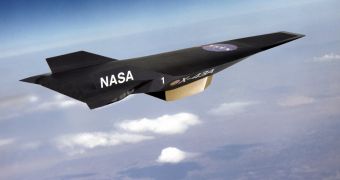The United States, Russia, India, Japan and China have all announced plans to send astronauts back to the Moon around 2020. India's space agency, although lacking the level of funding found in the US and Japan, has an ambitious plan for the next decade.
In a statement made this spring by India's then president, A.P.J. Abdul Kalam, the country wants to launch its first lunar orbiter, the Chandraayan-1, in early 2008 and a manned mission to the moon sometime near the end of the next decade.
The Indian space agency is now working on a revolutionary, reusable launch vehicle (RLV) that takes an innovative approach using a scramjet "hyperplane" according to Kalam. India's scramjet RLV, Kalam asserted, will provide the "low-cost, fully reusable space transportation" that has previously "denied mankind the benefit of space solar-power stations in geostationary and other orbits," Technology review reports.
A scramjet is a type of jet that uses a supersonic flow in the combustor and consists of a constricted tube through which inlet air is compressed by the high speed of the vehicle, a combustion chamber where fuel is combusted and a nozzle through which the exhaust jet leaves at higher speed than the inlet air.
This new design could offer many applications, like low-cost satellite launching and manned missions to space and will be capable of high speeds, in excess of Mach 10, which means that it could make the flight between Sydney and London in just two hours.
The first flight of the Hypersonic Technology Demonstrator Vehicle (HTDV), a protoype for the scramjet RLV named Avatar, is scheduled for the end of next year, and if it is successful, it will be a revolution in space exploration.
Avatar will be a light aircraft, weighing only 25 metric tons and to get into space, it will use liquid hydrogen to fuel the turbo-ramjet engines, 60 percent of which will be used to defeat Earth's gravity and ascent to a cruising altitude.
"The Avatar RLV project will enable the Indian program to leap ahead of the Chinese nostalgia trip. Once low cost to orbit comes alive, it will drive cheaper methods of doing all our unmanned activities in space," said Gregory Benford, an astrophysicist at the University of California, Irvine, and an advisor to NASA and the White House Council on Space Policy.

 14 DAY TRIAL //
14 DAY TRIAL //